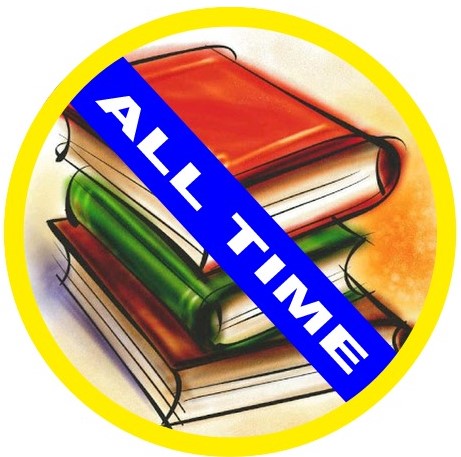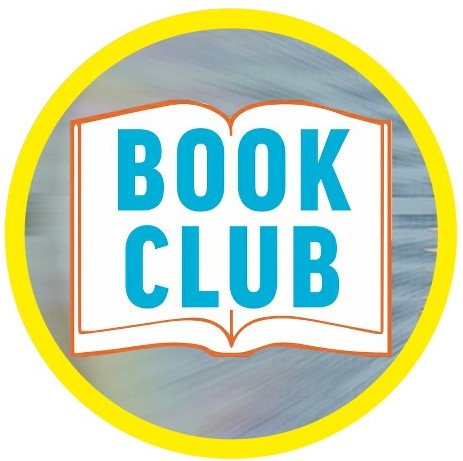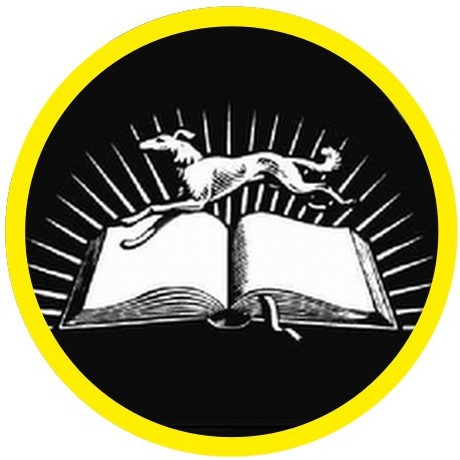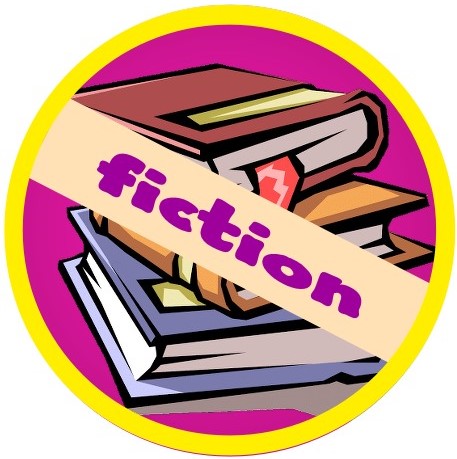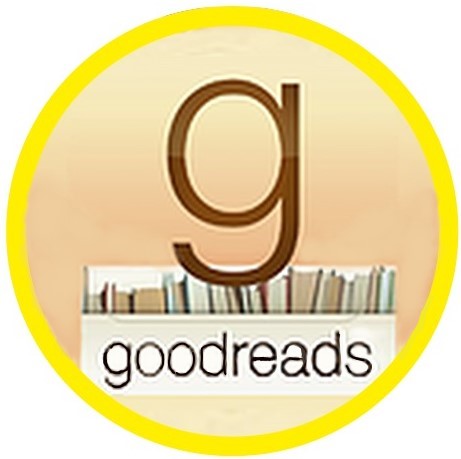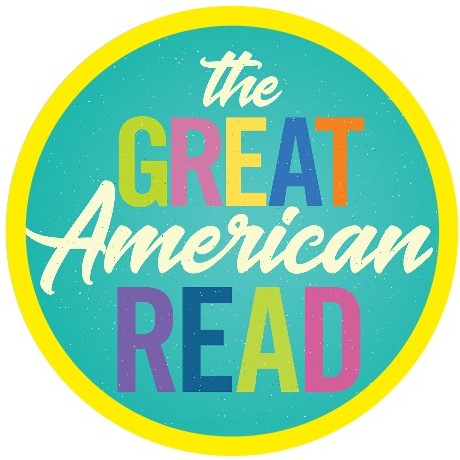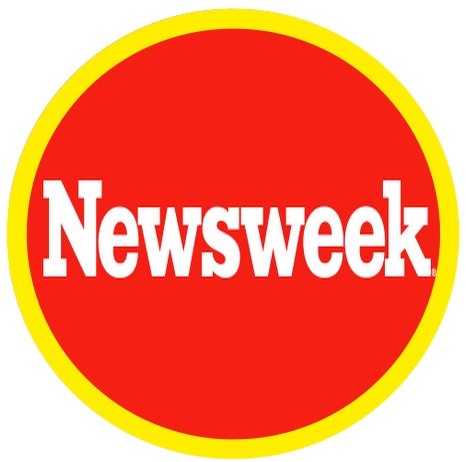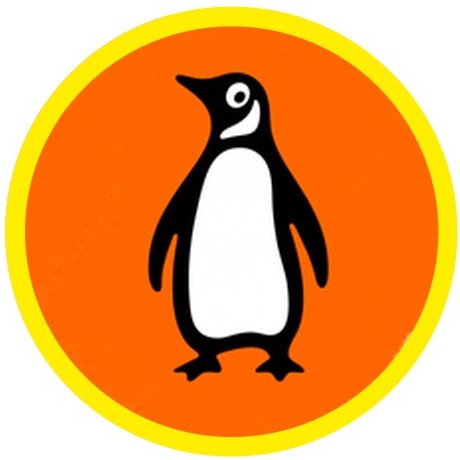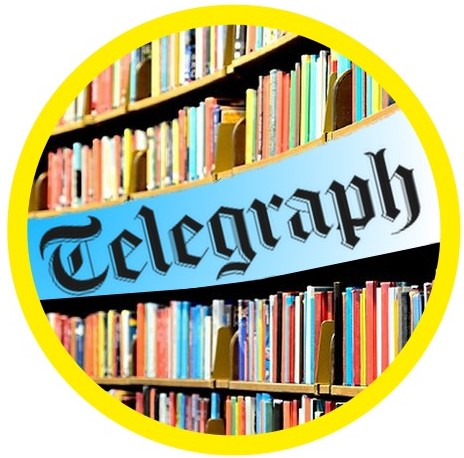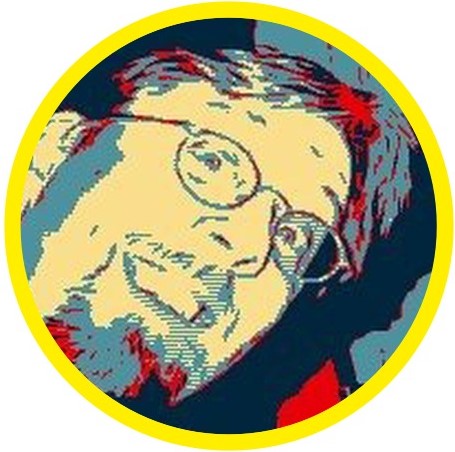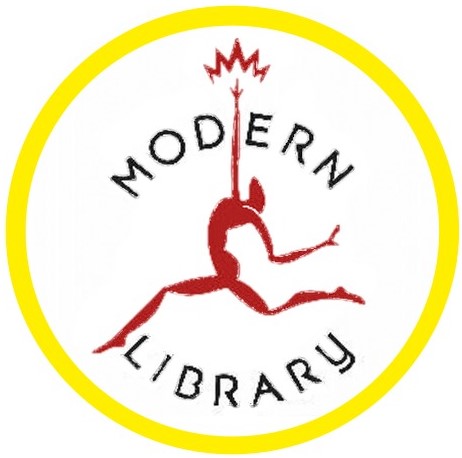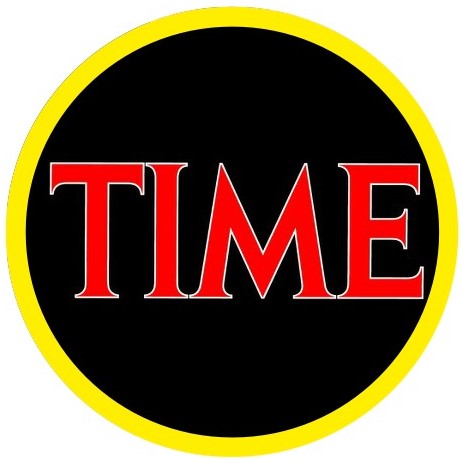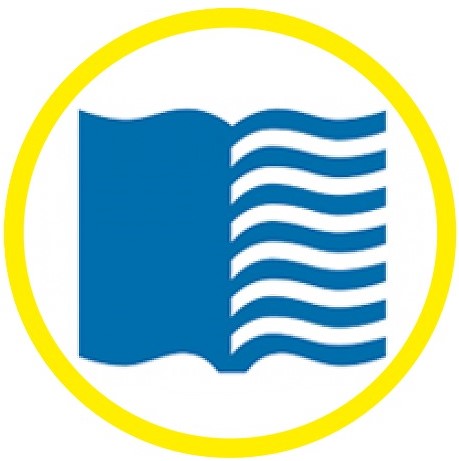|
About the Book:
The New York Times Book Review called The Hobbit “a glorious account of a magnificent adventure, filled with suspense and seasoned with a quiet humor that is irresistible.” AZ
“Bilbo Baggins is a hobbit who enjoys a comfortable, unambitious life…but his contentment is disturbed when the wizard Gandalf and a company of dwarves arrive on his doorstep…to whisk him away on an adventure.” WK They want to raid the treasure hoard of Smaug the dragon. Bilbo encounters the creature Gollum and finds a magic ring. “The story reaches its climax in the Battle of the Five Armies, where many of the characters and creatures from earlier chapters re-emerge to engage in conflict.” WK
The journey brings out Bilbo’s more adventurous nature as he “gains a new level of maturity, competence, and wisdom.” WK “Personal growth and…heroism are central themes of the story, along with motifs of warfare.” WK
“Tolkien’s own experiences during World War I…[were] instrumental in shaping the story. The author’s scholarly knowledge of Germanic philology and interest in mythology and fairy tales are often noted as influences.” WK
The Hobbit was “nominated for the Carnegie Medal and awarded a prize from the New York Herald Tribune for best juvenile fiction.” WK “The publisher was encouraged by the book’s critical and financial success and, therefore, requested a sequel.” WK Tolkien responded with a trilogy, The Lord of the Rings, also in this book. The four books were turned into a series of six movies.
December 30, 2012: Personal Reflection:
I took my 10-year-old son to see The Hobbit. I'm not sure which of us was more excited, although I will confess only one of us went in costume.
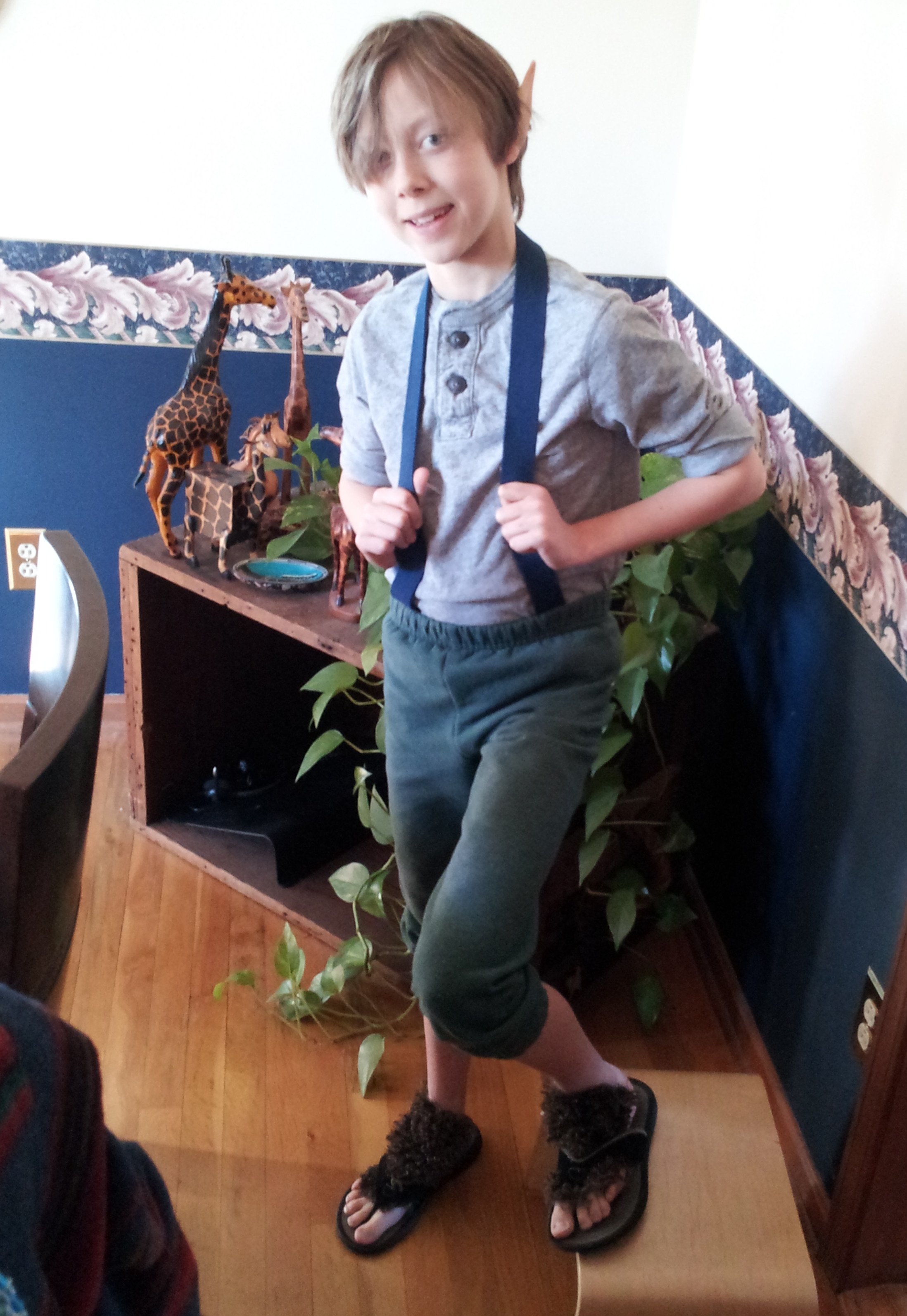 my son dressed as a hobbit
I read The Hobbit and the Lord of the Rings trilogy repeatedly through my adolescent years. While I didn't generally read fantasy and was never a particular fan of D&D, the world Tolkien created absolutely enraptured me. I was as ecstatic as the rest of the throngs when Peter Jackson waved his magic wand over his movie treatments of the Lord of the Rings trilogy and proved they could be made into masterful movies.
While my son had not seen any of those movies, he was interested. I decided we might as well start with The Hobbit and work our way through the series logically. We read the book together and I delighted at seeing the story come to life for him. However, I was also troubled. Now that I am regularly writing myself, I nitpicked at certain aspects of Tolkien's writing style - mostly his wordiness.
I have certainly been known to commit that horrid writing sin of serving up too much detail. I'm a believer in coloring a scene and giving some background that might not be integral to the story, but gives it flavor.
Tolkien believes in this philosophy ten-fold. He can spend pages giving background story on a setting or character which is completely unnecessary to the overall tale. While some of this can enrich, it can also infuriate. Readers can reach a point of screaming, well, "Get to the point!"
Jackson was praised by many Tolkien fans (including myself) for his talent at carefully editing some of this detail out the Lord of the Rings. For example, in the original Fellowship of the Rings book, a whole chapter is dedicated to a totally superfluous tale about a character named Tom Bombadil who never figures into the overall plot. Jackson justifiably excised the character from the story.
At the same time, though, Jackson now finds himself criticized for doing exactly the opposite with The Hobbit. He has stretched one book into three movies. While his aim is to obviously link the two trilogies by fleshing out elements of Lord of the Rings which are only hinted at or left untouched in The Hobbit. He has also sought to infuse his movie version of The Hobbit with a darker tone than the book, again to seemingly match it up better with his movie versions of Lord of the Rings.
Now, exactly what point I’m making here, I’m not sure. Oh, right. I’m making the point that even the most celebrated of writers can find themselves distracted, drifting off on a tangent that may not benefit the overall story. Sometimes these diversions can become the essence of why a story becomes beloved, but they can also be the reason a story is despised. With that, I feel I should stop before I babble any longer. Some of you may wish I’d shut up already.
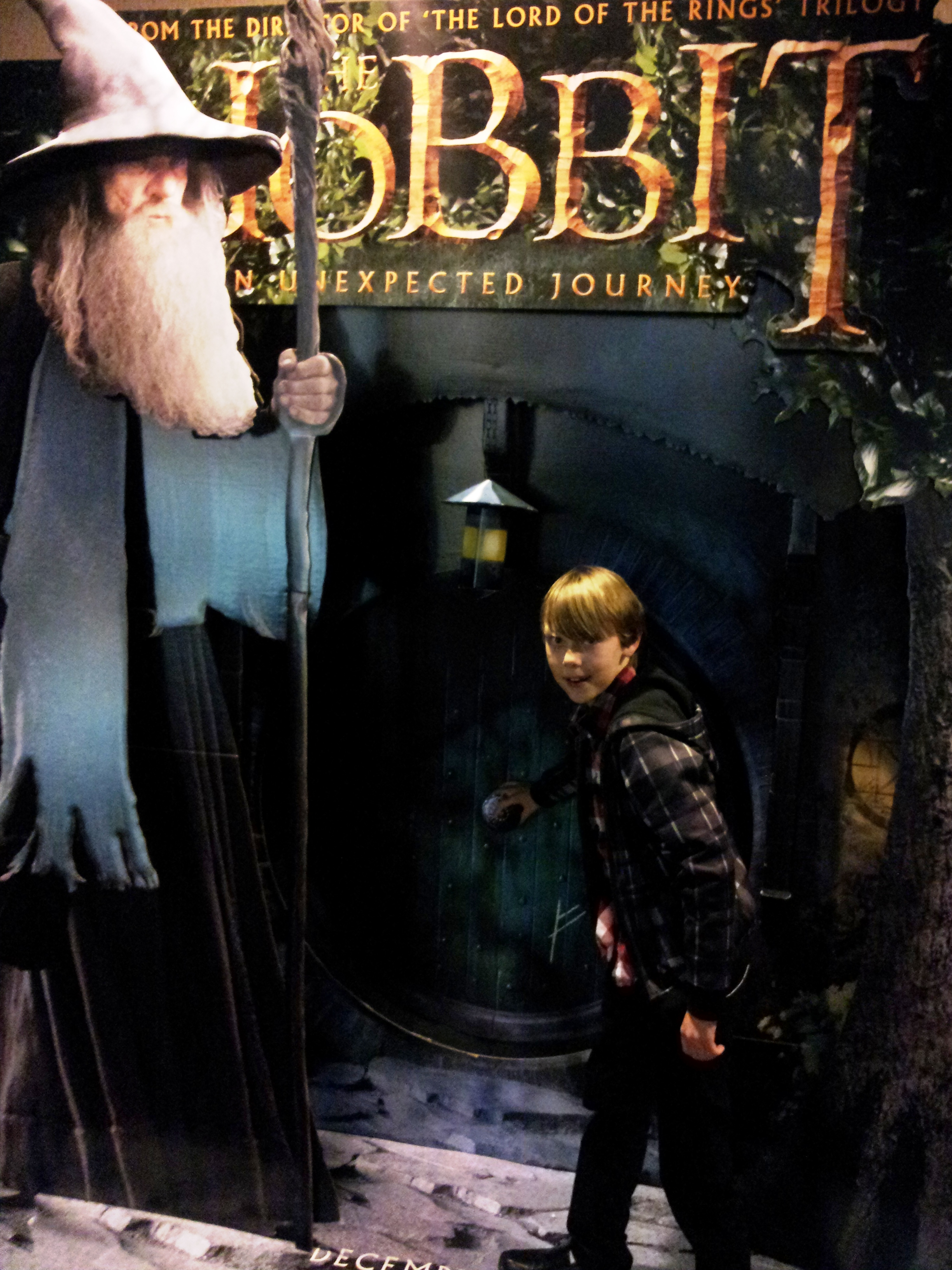 my son in front of the movie poster
Resources and Related Links: | 